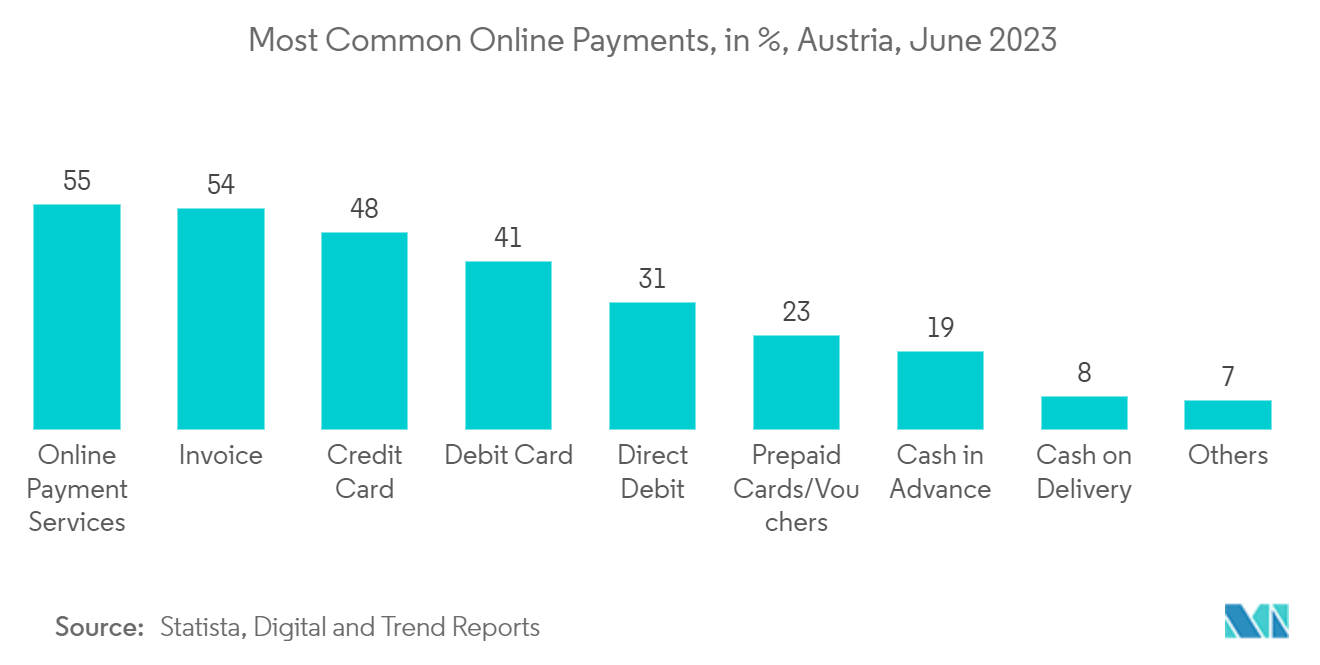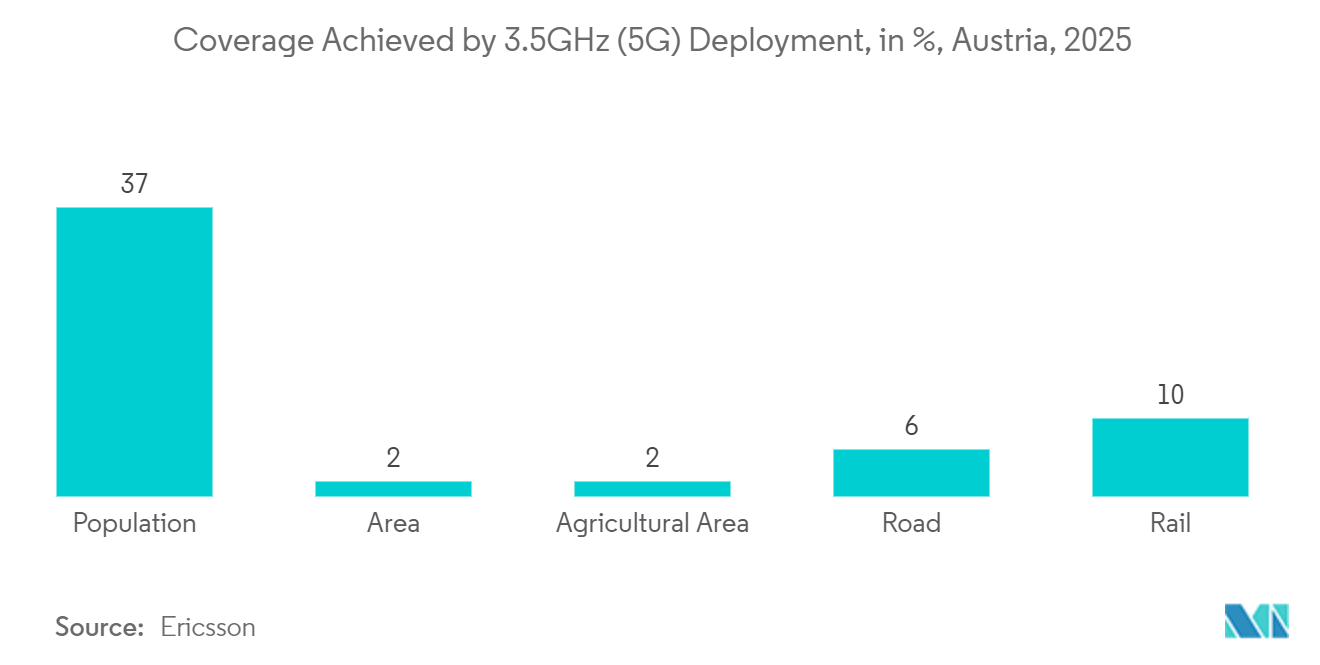Market Trends of Austria Data Center Cooling Industry
BFSI to Hold Significant Growth
- In Austria, the Banking 4.0 Digitalization and Transformation Conference was conducted in October 2022, which mainly assisted the stakeholders in Austria in developing an understanding of new technologies in the banking sector. It allows the creation of digital assets and supports gaining a deeper understanding of the connection between customers, strategies, and analytics.
- In 2022, 23% of all online transactions were by consumers using bank transfers. In 26% of all transactions, they used e-wallets. Although most Austrians choose cashless methods for online purchases, 5% of consumers paid using cash, which is more typical in emerging markets. In 7% of digital payments, they used various additional payment methods.
- Austrians spend modestly online, with the average annual spending a third lower than the European average of EUR 2,186 (USD 2554.62). Considering the above instances, the growing online transactions and the initiations taken by the fintech players to develop online payment methods drives the growth of data center construction and cooling solution.
- The Austrian FinTech industry has seen an increase in the number of domestic FinTech startups in the past few years, with robust growth in sectors including payments, investments, insurance, and accounting. According to a study by the Austrian Central Bank, there are currently about 300 FinTech companies in Austria. Though companies are active in various FinTech sub-sectors, payment continues to be the largest sector in the Austrian FinTech ecosystem. Overall, the increase in data traffic is expected to lead to major consumption of heat energy, leading to significant demand for the cooling solution.

Liquid Cooling to Hold Significant Growth
- Efficient cooling & heat dissipation for performance-demanding servers are possible with direct-to-chip liquid cooling. Liquid cooling ensures peak system performance and reliability while encouraging denser computing.
- Air cooling is just insufficient to sustain the dependability of IT systems in facilities with exceptionally high-density racks (usually over 30 kW), regardless of how new or optimized they may be. Liquid cooling is a better option for such a factor. Facilities such as Interxion's new facility VIE3 and STACKIT, Ostermiething (AT) DC 10 Phase 2 are the under-construction facilities having high rack density.
- A coalition of five Austrian universities known as The Vienna Scientific Cluster (VSC) released an RFP to build a third generation of the country's most powerful and efficient supercomputer. GRC (Green Revolution Cooling Inc) leveraged their patented immersion cooling technology, which maximized density by incorporating servers designed for immersion (SDI) and featured a closed-loop, zero-water-use system.
- Austria also has a mature telecom market, dominated by Telekom Austria, Magenta Telekom (formed from the merger of T-Mobile Austria and the cableco UPC Austria), and 3 Austria. The mobile market benefits from a growing number of MVNOs. Recently, in a new 5G spectrum auction, Austria raised EUR 202 million (USD 240 million). A1 secured 80 megahertz for more than EUR 65 million (USD 68.3 million), T-Mobile Austria paid approximately EUR 87 million (USD 91 million) for 90 megahertz, and Hutchison Drei Austria paid nearly EUR 50 million (USD 52.5 million) for 90 megahertz.
- The 5G technology will enable even faster data transmission rates for mobile phones with higher refresh rates and HD video streaming. These are considered one of the main drivers of the need for data center facilities in the telecom segment, which will lead to major liquid-based cooling adoption for the server.


